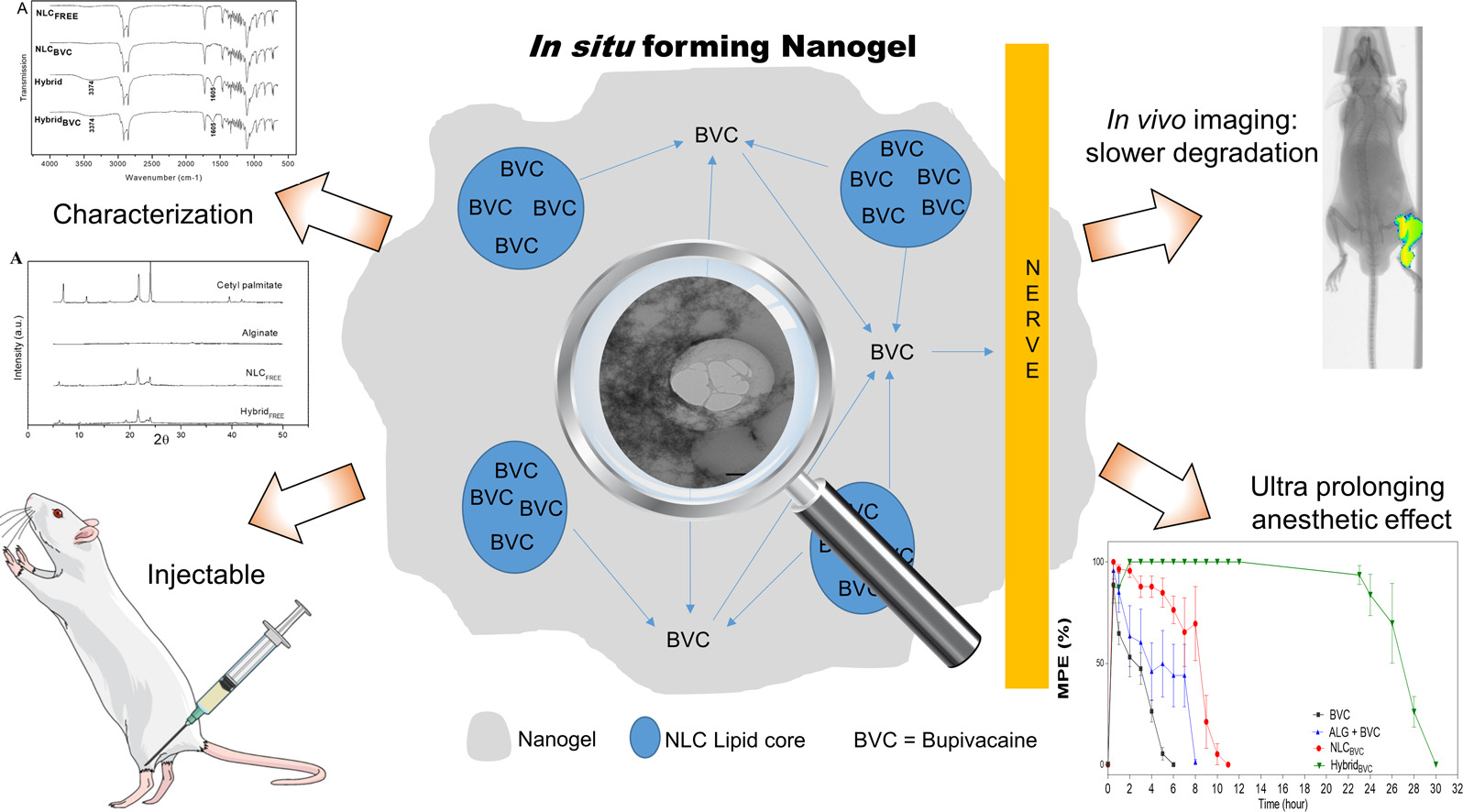Injectable in situ forming nanogel: A hybrid Alginate-NLC formulation extends bupivacaine anesthetic effect

Finding an ideal anesthetic agent for postoperative pain control, with long action and low side effects, is still a challenge.
Local anesthetics have potential for such application if their time of action is improved. This work introduces a new hybrid formulation formed by the association of a nanostructured lipid carrier (NLC) with a biopolymeric system to encapsulate bupivacaine (BVC). The hybrid formulation was physicochemical and structurally characterized by DLS, TEM, DSC, XDR and FTIR-ATR, and it remained stable for 12 months at room temperature.
In vivo analgesia and imaging tests showed that the hybrid system was able to modulate the release, and to increase the concentration of BVC at the site of action, by forming a nanogel in situ. Such nanogel improved over 5 times (>24 h) the anesthesia duration, when compared to free BVC at clinical (0.5%) doses. Therefore, this novel in situ-forming nanogel shows great potential to be used in postsurgical pain control, improving the action of BVC, without losing its versatility of (infiltrative) application.
Highlights
- The hybrid formulation was developed by the association of a nanostructured lipid carrier with a biopolymeric system.
- The hybrid formulation was physicochemical and structurally characterized.
- The hybrid system was able to modulate the release by forming a nanogel in situ.
- The nanogel improved over 5 times the anesthesia duration, when compared to free BVC at clinical doses.
Author links open overlay panel
Gustavo H.Rodrigues da Silva, GabrielaGeronimo, Lígia N.M.Ribeiro, Viviane A.Guilherme, Ludmilla Davidde Moura, André L.Bombeiro, Juliana DamascenoOliveira, Márcia C.Breitkreitz, Eneidade Paula
https://doi.org/10.1016/j.msec.2019.110608

